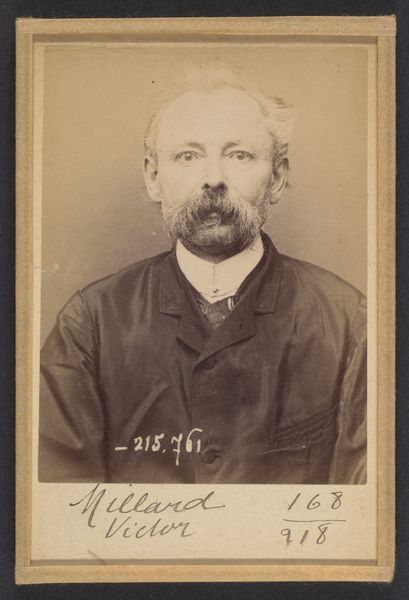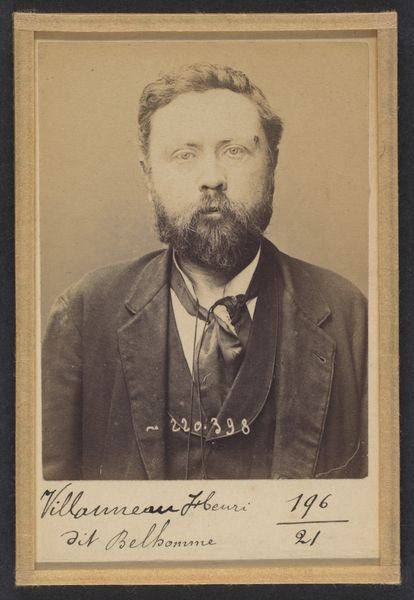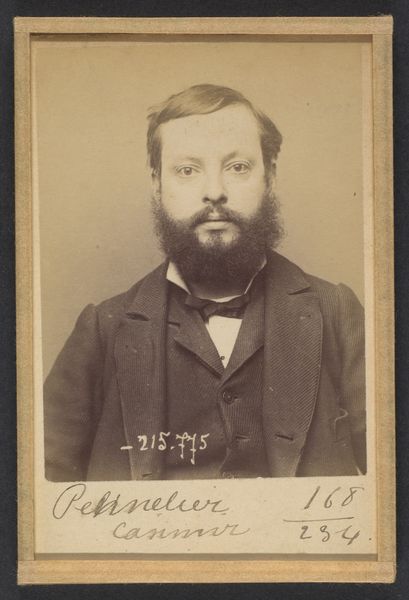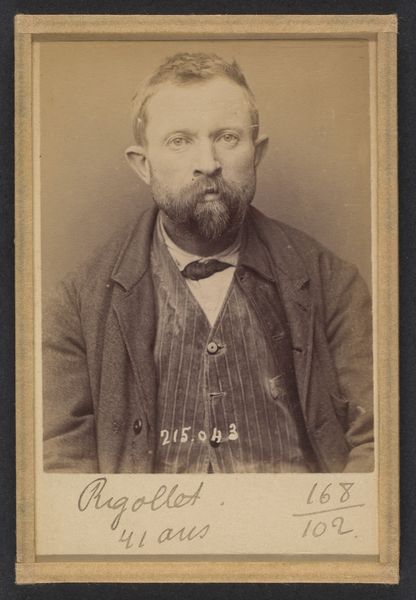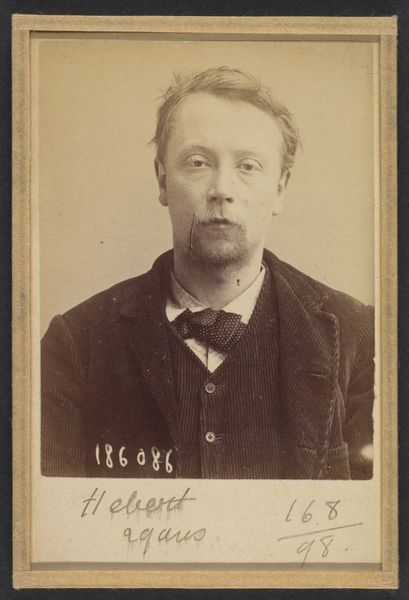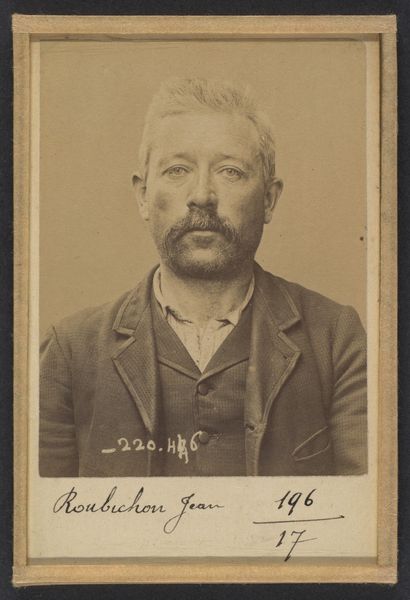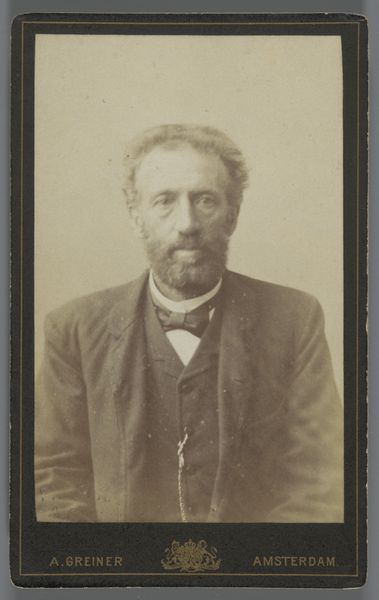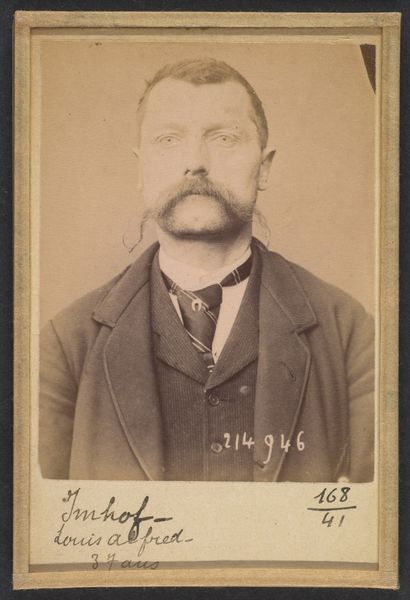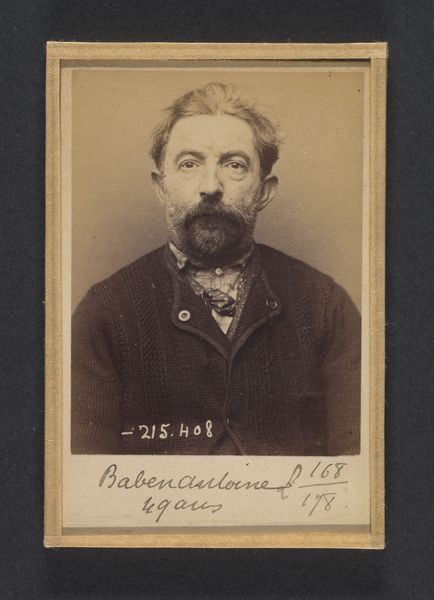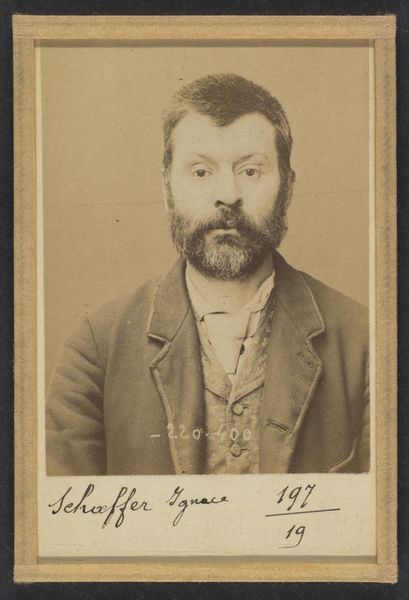
Oudin. Clovis. 49 ans, né à Saint-Hilaire (Marne). Mécanicien. Anarchiste. 2/3/94. 1894
0:00
0:00
#
portrait
#
photo restoration
#
low key portrait
#
portrait image
#
portrait
#
portrait subject
#
film poster
#
portrait reference
#
men
#
portrait art
#
fine art portrait
#
celebrity portrait
Dimensions: 10.5 x 7 x 0.5 cm (4 1/8 x 2 3/4 x 3/16 in.) each
Copyright: Public Domain
Curator: This is a photograph taken in 1894 by Alphonse Bertillon. It’s titled “Oudin. Clovis. 49 ans, né à Saint-Hilaire (Marne). Mécanicien. Anarchiste.” Editor: It has the stark, somewhat faded quality you'd expect from a historical photograph. He looks directly at us, and I notice this serious gaze coupled with what appears to be annotations on the print itself. Almost like a police mugshot, but imbued with much more. Curator: You've hit upon a key point. Bertillon was a pioneer of forensic photography. He developed a system of anthropometry—using body measurements for identification. Editor: So this wasn’t about aesthetics or artistic expression then; this was about documenting and categorizing a person based on physical attributes and presumed affiliations? Curator: Exactly. The stark lighting, the direct gaze, and those handwritten notes speak volumes about the power dynamics at play. The photo reduces Oudin, the man, into data. Yet the added labels “Mécanicien. Anarchiste”, act almost like a brand. Editor: Yes, the materiality contributes. It's not a glossy print meant for display, but a utilitarian object with the signs of the process quite evident. There’s the emulsion, the aging of the paper and the photographer's very handwriting. The inscription literally brands him. The making itself—the mass-produced, functional photograph—underscores a larger system of control and documentation. Curator: It's chilling to think of how easily these images, intended for bureaucratic purposes, could then morph into potent symbols of marginalization and even persecution, throughout the twentieth century. This photo, then, becomes an object of loaded cultural significance. Editor: Precisely. And in its own stark way, this image reflects on how tools, techniques, and seemingly objective practices, such as photography, were marshalled to serve and perpetuate social control. Seeing the evidence of the materials and techniques, in addition to these inscriptions, allows us a critical reflection of it's purpose. Curator: Considering all the different elements combined, this particular portrait becomes not just a record, but also a study of its own recordkeeping as a symbolic tool. Editor: Right, its surface belies the history ingrained in it, both technically, physically and socially.
Comments
No comments
Be the first to comment and join the conversation on the ultimate creative platform.
